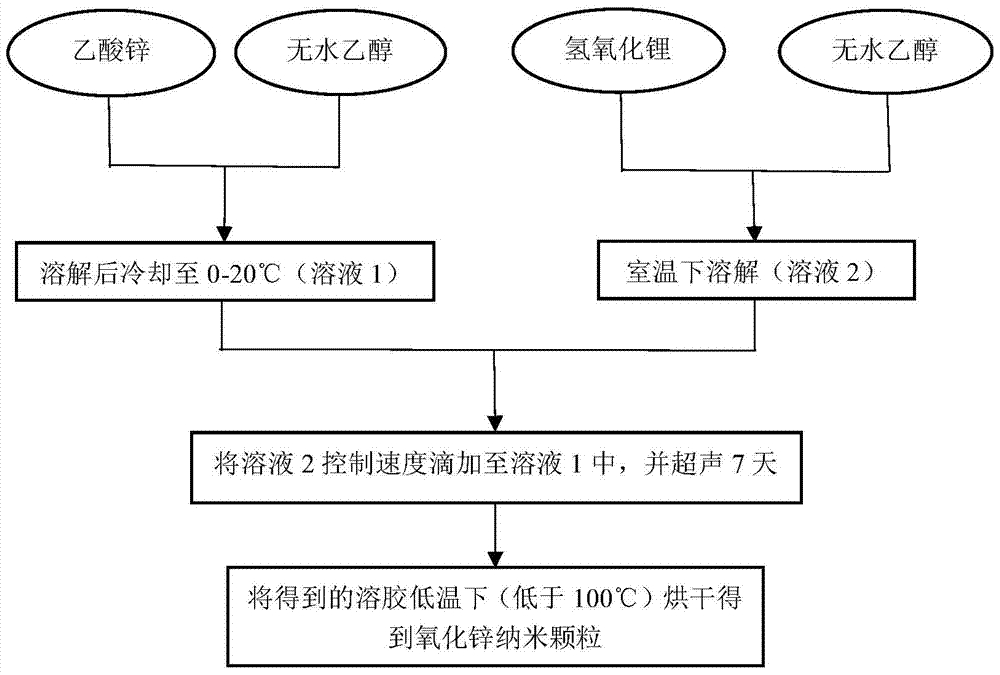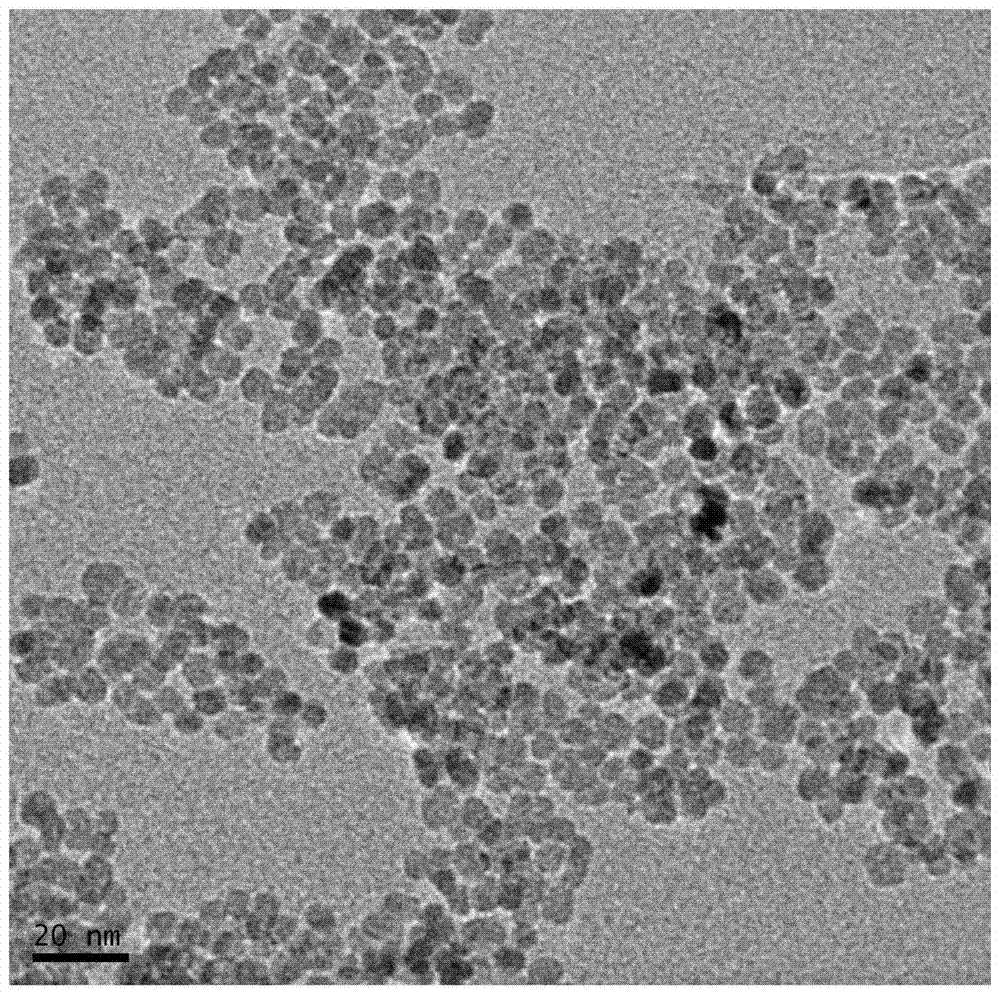Preparation method of zinc oxide nanoparticle lithium ion battery negative electrode material with high specific capacity
A zinc oxide nano, lithium ion battery technology, applied in battery electrodes, zinc oxide/zinc hydroxide, nanotechnology for materials and surface science, etc. The effect of learning, short diffusion path and small particle size
- Summary
- Abstract
- Description
- Claims
- Application Information
AI Technical Summary
Problems solved by technology
Method used
Image
Examples
Embodiment 1
[0032] 1) Put 13mmol of zinc acetate in 130mL of absolute ethanol, and heat to dissolve at 50°C under magnetic stirring;
[0033] 2) When the zinc acetate is completely dissolved, add absolute ethanol to keep the volume of the solution at 130mL, and cool to 10°C;
[0034] 3) 10 mmol of crystalline lithium hydroxide was dissolved in 130 mL of absolute ethanol at room temperature by magnetic stirring;
[0035] 4) The lithium hydroxide solution obtained in step 3) is added dropwise to the solution of step 2) under stirring, and the dropwise addition is completed in 20 minutes;
[0036] 5) At room temperature, ultrasonically disperse the above mixed solution for 4 days to obtain a white sol;
[0037] 6) centrifuging and cleaning the obtained sol;
[0038] 7) put it into a drying oven, and dry at 60° C. for 24 hours to obtain zinc oxide nanoparticles, that is, zinc oxide nanoparticles lithium ion battery negative electrode material with high specific capacity.
[0039] The prepa...
Embodiment 2
[0044] 1) Put 15mmol of zinc acetate in 100mL of absolute ethanol, and heat to dissolve at 40°C under magnetic stirring;
[0045] 2) When the zinc acetate is completely dissolved, re-dilute to 100mL with absolute ethanol and cool to 10°C;
[0046] 3) 11.5 mmol of crystalline lithium hydroxide was dissolved in 150 mL of absolute ethanol at room temperature by magnetic stirring;
[0047] 4) The lithium hydroxide solution obtained in step 3) was added dropwise to the solution of step 2) under stirring, and the addition was completed in 25 minutes;
[0048] 5) ultrasonically sonicate the above mixed solution for 7 days at room temperature to obtain a white sol;
[0049] 6) centrifuging and cleaning the obtained sol;
[0050] 7) put it into a drying oven, and dry at 60° C. for 24 hours to obtain zinc oxide nanoparticles, that is, zinc oxide nanoparticles lithium ion battery negative electrode material with high specific capacity.
Embodiment 3
[0052] 1) Put 18mmol of zinc acetate in 90mL of absolute ethanol, and heat to dissolve at 75°C under magnetic stirring;
[0053] 2) When zinc acetate is completely dissolved, re-dilute to 90mL with absolute ethanol and cool to 0°C;
[0054] 3) 13.8 mmol of crystalline lithium hydroxide was dissolved in 150 mL of absolute ethanol at room temperature by magnetic stirring;
[0055] 4) The lithium hydroxide solution obtained in step 3) was added dropwise to the solution of step 2) under stirring, and the addition was completed in 25 minutes;
[0056] 5) ultrasonically sonicate the above mixed solution for 4 days at room temperature to obtain a white sol;
[0057] 6) centrifuging and cleaning the obtained sol;
[0058] 7) put it into a drying oven, and dry at 60° C. for 24 hours to obtain zinc oxide nanoparticles, that is, zinc oxide nanoparticles lithium ion battery negative electrode material with high specific capacity.
PUM
| Property | Measurement | Unit |
|---|---|---|
| particle size | aaaaa | aaaaa |
| size | aaaaa | aaaaa |
Abstract
Description
Claims
Application Information
 Login to View More
Login to View More - R&D
- Intellectual Property
- Life Sciences
- Materials
- Tech Scout
- Unparalleled Data Quality
- Higher Quality Content
- 60% Fewer Hallucinations
Browse by: Latest US Patents, China's latest patents, Technical Efficacy Thesaurus, Application Domain, Technology Topic, Popular Technical Reports.
© 2025 PatSnap. All rights reserved.Legal|Privacy policy|Modern Slavery Act Transparency Statement|Sitemap|About US| Contact US: help@patsnap.com



